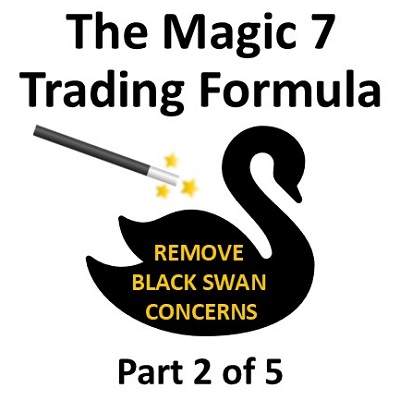
As traders, we constantly strive to optimize our approach to the markets. One of the most crucial yet often misunderstood aspects is maintaining an appropriate risk-reward structure. Whether you’re engaged in market neutral trading or directional options strategies, understanding and applying solid risk management principles can make or break your trading career.
Click here or on the video below to continue to learn more depth on the second item:
Subscribe: YouTube
Subscribe: Soundcloud
Understanding the Fundamentals: Risk, Reward, and Probability
Trading is fundamentally a balancing act involving risk, reward, and probability. Many traders focus heavily on probability, aiming for high win rates, but this can be a trap. High probability strategies—like winning 95% of the time—often come with dangerously skewed risk-reward ratios that can lead to significant losses if not managed properly.
The Pitfalls of Poor Risk-Reward Structures
For instance, some traders accept structural risks that are disproportionately large compared to potential rewards. Imagine risking $50,000 to try to make $5,000—this 1:10 risk-reward ratio is inherently risky, especially when overnight moves or market gaps can increase exposure. Realistically, overnight risk can cause losses two to three times your stop loss, transforming what seemed like a manageable trade into a gamble with unfavorable odds.
Optimizing Your Trading Approach: Directional and Options Strategies
To improve your risk-reward management, consider adopting different trading structures:
- Vertical spreads: Offer a balanced risk-reward profile, often close to a 1:1 or better ratio.
- Long options: Can provide asymmetric risk-reward ratios, sometimes reaching 100:1, but require careful analysis.
A key insight shared by experienced traders like John Locke is that focusing solely on probability—such as aiming for 90% win rates—can be perilous. Many hedge funds or traders achieving high win rates often do so at the expense of very poor risk-reward ratios, risking ruin in the process.
The Power of Risk-Reward Ratios Over Probability
It’s more practical to understand your risk-reward ratio than solely overemphasize the probability of winning. Calculating your risk-reward is straightforward and provides clarity. For example, knowing your potential reward versus potential loss helps you define acceptable position sizes and manage your overall portfolio risk effectively.
Avoiding the Black Swan: Structured Risk Management
When you implement proper risk-reward frameworks, the threat of black swan events diminishes significantly. Large, anomalous market moves are less likely to devastate your account if you’re trading with proportionate risk levels. Conversely, excessively high risk-low relative reward setups amplify exposure to rare but catastrophic market events.
Final Thoughts: Balancing Probability and Risk-Reward in Trading
Success in trading hinges on understanding and applying the correct risk-reward structures alongside realistic probability assessments. While estimating probability can be complex—especially when relying on options Greek or statistical models—calculating your structural risk and reward ratios is simple and reliable.
By emphasizing sound risk management, avoiding overly risky structures, and tailoring your trading strategies to maintain appropriate risk-reward ratios, you can elevate your trading performance and safeguard your capital against unforeseen market shocks.
If you’re serious about becoming a more disciplined trader, mastering risk-reward management is non-negotiable. Focus on structure, not just probability, and watch your trading results improve dramatically.

Leave a Reply
You must be logged in to post a comment.